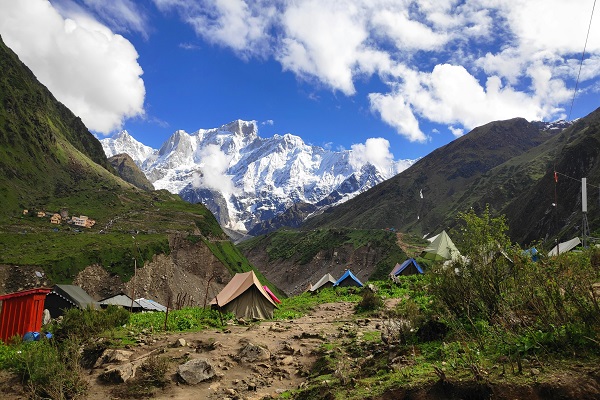Wildlife Conservation and Ecotourism: Protecting India’s Flora and Fauna

India, a land of incredible biodiversity, is home to a vast array of flora and fauna that has been globally recognized. With over 70% of its species found nowhere else on earth, India’s wildlife is an irreplaceable part of the world’s natural heritage. However, habitat destruction, poaching, and climate change pose significant threats to its wildlife. In this context, ecotourism emerges as a powerful tool for both conservation and sustainable economic growth. This article explores the relationship between wildlife conservation and ecotourism in India, highlighting how responsible tourism practices can protect endangered species and support local communities. We will delve into the efforts to balance wildlife protection with the demands of tourism, showcasing success stories from India’s national parks and wildlife sanctuaries.
Wildlife Conservation and Ecotourism: Protecting India’s Flora and Fauna
India is one of the most biodiverse countries in the world, with a wealth of species, ecosystems, and natural habitats that are vital not only for the country but for global ecological balance. From the majestic Bengal tiger to the rare one-horned rhinoceros, and the delicate migratory birds of the Himalayas, India’s wildlife is an essential part of its natural heritage. However, the rapid growth of urbanization, industrialization, and climate change has led to serious threats to these ecosystems and the species that inhabit them.
In the face of these challenges, wildlife conservation in India has become a pressing priority. Simultaneously, there is growing recognition of the potential of ecotourism to play a pivotal role in preserving these unique species while benefiting local communities and economies. Ecotourism, defined as responsible travel to natural areas that conserves the environment and improves the well-being of local people, has proven to be a sustainable model for wildlife conservation.
The Connection Between Ecotourism and Conservation
Ecotourism is not just about protecting nature but about providing a framework through which tourism directly contributes to conservation efforts. In India, the development of eco-friendly travel options and wildlife-based tourism has provided new opportunities to protect endangered species while encouraging travelers to respect the natural environment.
One of the main benefits of ecotourism in wildlife conservation is the funding it generates. Entrance fees, donations, and the expenditure of tourists support conservation programs, habitat restoration, and the fight against poaching. Additionally, ecotourism raises awareness about the importance of biodiversity and the need for sustainable practices. By exposing visitors to the beauty and fragility of India’s wildlife, it fosters a sense of responsibility and encourages more people to engage in environmental protection.
Wildlife Sanctuaries and National Parks Leading the Charge
India’s vast network of national parks and wildlife sanctuaries has been at the forefront of the ecotourism movement. These protected areas not only serve as havens for endangered species but are also popular destinations for ecotourists. Some of the most notable locations include:
1. Jim Corbett National Park (Uttarakhand)
Jim Corbett is India’s oldest national park and one of the most successful examples of wildlife conservation. Established in 1936, it is famous for its Bengal tigers, which have been successfully protected through various conservation programs. The park also offers ecotourism opportunities, including guided safaris that allow visitors to observe tigers and other wildlife in their natural habitat. The revenue generated from tourism has been critical in supporting the park’s conservation initiatives.
2. Kaziranga National Park (Assam)
Kaziranga is home to the world’s largest population of the one-horned rhinoceros, which was once on the brink of extinction. Ecotourism in Kaziranga has provided crucial funding for anti-poaching measures and habitat restoration. The park has also adopted innovative tourism strategies, such as the use of eco-friendly safari vehicles and promoting minimal environmental impact, which help balance tourism with conservation efforts.
3. Sundarbans Mangrove Forest (West Bengal)
The Sundarbans, a UNESCO World Heritage Site, is home to the elusive Royal Bengal tiger, saltwater crocodiles, and diverse marine species. The ecotourism industry in this region plays an essential role in funding local communities while protecting the delicate mangrove ecosystems. Tours in the Sundarbans are conducted in a way that minimizes environmental damage, ensuring that the area’s biodiversity remains intact.
4. Periyar Wildlife Sanctuary (Kerala)
Known for its elephant population, Periyar Sanctuary promotes ecotourism with sustainable trekking, boat tours, and nature walks. The sanctuary is a leader in community-based ecotourism, where local tribal communities are involved in guiding and running eco-lodges, thus ensuring that tourism benefits the people living in the area. This also aids in preserving the sanctuary's unique biodiversity.
Promoting Local Community Involvement
One of the key aspects of ecotourism in India’s wildlife conservation efforts is the involvement of local communities. By making local populations active participants in conservation, ecotourism ensures that the benefits are distributed equitably, creating financial incentives for the preservation of wildlife habitats.
In many cases, local communities act as guides, hosts, and conservation stewards. In the Nilgiri Biosphere Reserve, for example, indigenous tribes like the Todas and Kotas have been integrated into the tourism sector, offering traditional knowledge of local flora and fauna. This not only preserves the cultural heritage of these communities but also strengthens their commitment to safeguarding natural resources.
Challenges and the Future of Ecotourism
While ecotourism in India’s wildlife sanctuaries is undoubtedly beneficial, there are also challenges that need to be addressed. Over-tourism in certain areas can lead to environmental degradation, particularly in fragile ecosystems. The influx of tourists can disrupt wildlife behavior, disturb their habitats, and contribute to pollution if not carefully managed.
To ensure that ecotourism remains a positive force for conservation, it is essential to adopt sustainable practices. This includes limiting the number of visitors in sensitive areas, promoting low-impact activities, and ensuring that the revenue generated by tourism is reinvested into conservation programs. Additionally, educating tourists about responsible behavior and the importance of respecting wildlife and their habitats is crucial.
Conclusion: Ecotourism as a Powerful Tool for Wildlife Conservation
Ecotourism has proven to be an effective tool for wildlife conservation in India. By generating revenue, raising awareness, and involving local communities, it helps protect the country’s incredible biodiversity. However, as the ecotourism sector continues to grow, it is essential to maintain a balance between tourism and conservation, ensuring that India’s flora and fauna are preserved for future generations.
Through responsible travel, tourists can actively contribute to the protection of endangered species and the preservation of India’s natural heritage. By supporting ethical and sustainable tourism practices, ecotourists play a crucial role in safeguarding the future of India’s wildlife and ensuring that the country’s natural treasures continue to thrive.
























